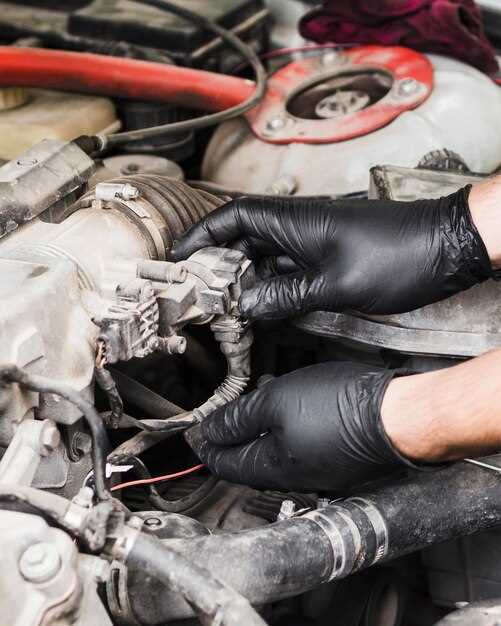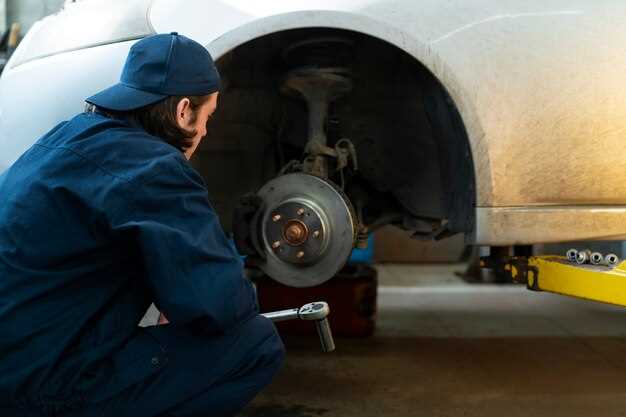
Proper brake function is crucial for vehicle safety, yet many drivers overlook the importance of maintaining their brake system. One of the essential tasks in brake maintenance is bleeding the brakes, a process that removes air bubbles from the brake lines. This article will guide you through the steps to bleed your brakes effectively, ensuring a smoother and safer driving experience.
Neglecting to bleed the brakes can lead to spongy brake pedals and reduced stopping power, putting you and others at risk. Understanding the signs that indicate your brakes need attention is the first step toward mastering this important task. Whether you’re a seasoned mechanic or a novice car owner, knowing how to bleed your brakes like a pro will empower you to take control of your vehicle’s performance.
In the following sections, we will explore the necessary tools, step-by-step procedures, and common mistakes to avoid. By the end of this guide, you will be equipped with the knowledge to maintain your brake system efficiently, enhancing both safety and reliability on the road.
Gathering the Right Tools and Supplies for Brake Bleeding

To effectively bleed your brakes, it is essential to gather the right tools and supplies beforehand. This preparation will streamline the process and ensure optimal results. Here is a comprehensive list of what you will need:
First and foremost, a reliable brake bleeder kit is crucial. This kit typically includes a reservoir, tubing, and various fittings. You can choose between manual, vacuum, and pressure bleeders, depending on your preference and expertise. Ensure that the kit is compatible with your vehicle’s brake system.
A wrench or socket set is necessary to loosen and tighten the brake bleeder screws. It’s advisable to have a selection of sizes to accommodate different vehicles. A torque wrench may also be beneficial for properly sealing the bleeder screws after the process.
A clean container or bottle is important for catching old brake fluid. This will prevent spills and make cleanup easier. Additionally, having several rags or paper towels on hand is helpful for wiping up any fluid that may accidentally dribble during the process.
The correct type of brake fluid is vital. Refer to your vehicle’s manual to ensure you are using the specified grade and type, such as DOT 3, DOT 4, or DOT 5. Make sure the fluid is fresh, as old or contaminated fluid can affect brake performance.
Lastly, safety gear should be part of your setup. This includes gloves to protect your hands from brake fluid, which can be corrosive, and safety glasses to shield your eyes from any potential splashes. Proper lighting is also suggested, as it will help you clearly see the components you’re working with.
By gathering these tools and supplies, you will equip yourself to perform brake bleeding efficiently and safely, leading to enhanced braking performance in your vehicle.
Step-by-Step Guide to Bleeding Brakes Without Air Bubbles

Properly bleeding your brake system is essential for optimal performance and safety. Follow this detailed guide to ensure you achieve a bubble-free brake fluid system.
Step 1: Gather Your Tools
Prepare a brake bleeder kit, which may include a wrench, a clear tube, a catch container, and brake fluid. Ensure you have the correct type of brake fluid for your vehicle.
Step 2: Locate the Brake Bleeder Valve
Identify the brake bleeder valve on each brake caliper. It is usually located near the top of the caliper, allowing air to escape when the valve is opened.
Step 3: Start with the Farthest Wheel
Begin bleeding the brakes starting with the wheel farthest from the master cylinder, typically the passenger side rear wheel. This ensures any trapped air is removed effectively.
Step 4: Attach the Tube
Place one end of the clear tube over the bleeder valve and the other end into the catch container. This allows you to observe any air bubbles released during the process.
Step 5: Open the Bleeder Valve
Using a wrench, carefully turn the bleeder valve counterclockwise to open it slightly. Be prepared to close it quickly after fluid starts to flow.
Step 6: Pump the Brake Pedal
Have a helper pump the brake pedal several times and hold it down. Then, while they keep the pedal pressed, quickly open the bleeder valve. Fluid and air will escape through the tube.
Step 7: Close the Bleeder Valve
Once you observe a steady stream of brake fluid without air bubbles, close the bleeder valve securely while your helper maintains pressure on the brake pedal. This prevents air from re-entering the system.
Step 8: Repeat the Process
Repeat the pumping and bleeding process several times until no bubbles appear in the fluid. Move on to the next wheel, following the same procedure in the order: passenger rear, driver rear, passenger front, and finally driver front.
Step 9: Check Brake Fluid Level
After bleeding all brakes, check the master cylinder fluid level and top it off if necessary. This ensures the system is filled correctly and minimizes the chance of air entering again.
Step 10: Test the Brake Pedal
Before driving, press the brake pedal firmly. It should feel solid, with no sponginess. If it feels soft, you may need to repeat the bleeding process to ensure all air has been removed.
Following these steps methodically will help you bleed your brakes effectively without leaving air bubbles in the system, ensuring improved braking performance.
Troubleshooting Common Issues During the Brake Bleeding Process
During the brake bleeding process, you may encounter several common issues that can hinder your progress and affect the performance of your braking system. Addressing these problems promptly will ensure optimal brake function.
One frequent issue is the presence of air bubbles in the brake lines. If you notice a spongy brake pedal, it may indicate that air has not been completely removed. To resolve this, repeat the bleeding process, ensuring proper technique by maintaining a firm grip on the brake pedal and fully depressing it before releasing the bleed valve. Consistently check for air bubbles in the fluid as you bleed each wheel.
Another problem could be brake fluid leakage at the bleed screw or brake line connections. This can compromise the complete bleeding process and lead to air re-entering the system. Inspect the bleed screw and surrounding lines for any signs of leakage. If leaks are detected, ensure all connections are tightly secured and replace any damaged components before continuing.
In some cases, you might encounter difficulty in getting the brake fluid to flow. This could be due to a clogged bleed valve or insufficient fluid in the master cylinder. Verify that the master cylinder is adequately filled with brake fluid and clear any debris from the bleed valve. If necessary, use a specialized brake bleed kit that helps create a vacuum to facilitate fluid movement.
Keep an eye on the brake fluid level during the process. An empty master cylinder can introduce air into the system, undoing your bleeding efforts. Always top off the fluid as needed and maintain a consistent fluid level throughout the procedure.
In situations where the brake pedal feels excessively hard, it may indicate an issue with the brake booster or a malfunctioning master cylinder. These components play crucial roles in brake performance. If you suspect a failure, conduct a thorough inspection and consult with a professional mechanic for further diagnosis and possible replacement.
Lastly, if you’re using multiple methods to bleed the brakes, such as the gravity or vacuum methods, ensure that the technique fits your specific vehicle’s setup. Different vehicles may react better to particular bleeding methods. Research appropriate techniques if you are unsure, or seek guidance from your vehicle’s manual.

